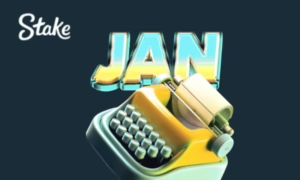Chinese Blockchain Evolution – Proudly NOT Chinese?
China has released its third monthly CCID Global Public Blockchain Technology Assessment Index, which revealed some interesting findings.

On July 20, 2018 China released its third monthly CCID Global Public Blockchain Technology Assessment Index, which revealed some interesting findings. According to this index, the top five ranking blockchain platforms are EOS, Ethereum, Nebulas, GXChain, and lastly NEO. This index is based on the main factors: “basic technology, application and innovation.” Given these requirements, as well as the Chinese government’s opinion of the validity of bitcoin and other pure cryptocurrencies, it is actually pretty impressive that Bitcoin made it to the 16th spot, one position higher than on June’s index.
Official China’s involvement in the home-grown cryptocurrency industry
According to the report of the top five blockchains listed, only NEO is based in China. The implications of this are of course, that China isn’t particularly interested in backing a project that goes against its agenda, even if it can be implemented in a centralized way. It is true that China has closed Chinese cryptocurrency exchange platforms and forbidden trading of cryptocurrencies (note: trading, not owning). The government there has also discouraged miners from continuing to participate in the industry. So, why ignore one of their potentially greatest home-grown sources of revenue in this industry?
China seems to be focusing on the implementation of decentralized blockchains launched from other countries. This perspective seems supported by the fact that major financial institutions in China including the Chinese Mint and the China Banking Regulatory Commission (CBRC) are looking to Ethereum for the implementation of new ideas. In the case of the Chinese Mint, they are looking to Ethereum as a possible foundation for the digitization of the Chinese yuan. While it may seem odd for the Mint to be exploring Ethereum over EOS, back in May, when the Chinese Mint made the announcement, Ethereum held first place.
Ethereum inspires confidence
Furthermore, Ethereum is an established platform with an existing widespread network of nodes, whereas EOS was only launched in January 2018 and is still in its early stages. It is therefore likely that China is going to wait-and-see before acting on their assessment. Or, it could be that the introduction of these assessments was meant to encourage interest and greater adoption of the platform for this very purpose.
However, the above suggestions are all just theories. The more pressing question is why they would choose Ethereum, when so many argue that NEO is so much more efficient and secure than Ethereum for dApp development. After all, while it is true that NEO is decentralized as Noam Levenson points out, NEO is designed not with anonymity, but the creation of a digital identity in mind. This makes it arguably ideal for China to use as another tool to monitor its citizens.
Of course, this support might shift in light of the recent pharmaceutical scandals that have been plaguing China this year. This relates to the recent ploys by Chinese citizens who have turned to blockchain as means of resistance against the censorship that the Chinese government has been imposing on those who attempt to spread news of the fraudulent vaccinations that have allegedly permeated Chinese market. This scandal was made all the worse by the fact that they were supplied to the public from supposedly reputable companies, with little backlash from the Chinese government when they were exposed.
So, how did these enterprising individuals undermine the Chinese government’s agenda?
An author calling himself ‘Beast’ wrote up an expose on the scandal and posted it online. Other users then tried sharing it on their accounts, only to have them removed within hours of posting the content. In response, one creative cryptocurrency enthusiast, decided to try a different approach: they opted to embed the news piece into the Ethereum blockchain. They did so by sending themselves some Ethereum, with the news piece embedded into the metadata of the transaction. Once sent, there was little to be done about the piece. As it was embedded in the metadata, it was transparent to everyone who wanted to review it in the Ethereum blockchain. As the Ethereum blockchain is one of the chains with the most nodes, it is incredibly difficult for the Chinese government to delete the content.
–
The third monthly CCID Global Public Blockchain Technology Assessment Index:










